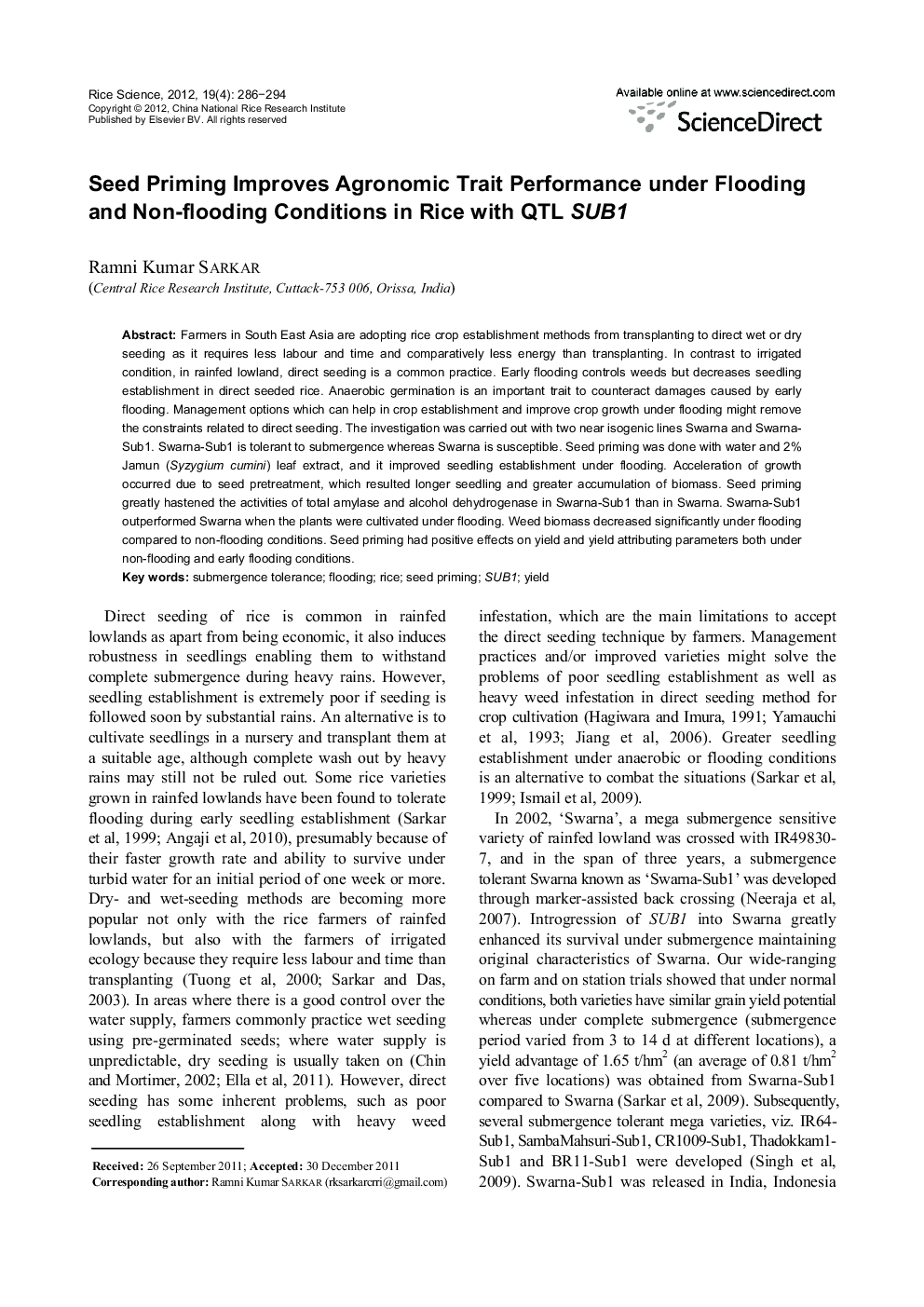| Article ID | Journal | Published Year | Pages | File Type |
|---|---|---|---|---|
| 4501920 | Rice Science | 2012 | 9 Pages |
Farmers in South East Asia are adopting rice crop establishment methods from transplanting to direct wet or dry seeding as it requires less labour and time and comparatively less energy than transplanting. In contrast to irrigated condition, in rainfed lowland, direct seeding is a common practice. Early flooding controls weeds but decreases seedling establishment in direct seeded rice. Anaerobic germination is an important trait to counteract damages caused by early flooding. Management options which can help in crop establishment and improve crop growth under flooding might remove the constraints related to direct seeding. The investigation was carried out with two near isogenic lines Swarna and Swarna-Sub1. Swarna-Sub1 is tolerant to submergence whereas Swarna is susceptible. Seed priming was done with water and 2% Jamun (Syzygium cumini) leaf extract, and it improved seedling establishment under flooding. Acceleration of growth occurred due to seed pretreatment, which resulted longer seedling and greater accumulation of biomass. Seed priming greatly hastened the activities of total amylase and alcohol dehydrogenase in Swarna-Sub1 than in Swarna. Swarna-Sub1 outperformed Swarna when the plants were cultivated under flooding. Weed biomass decreased significantly under flooding compared to non-flooding conditions. Seed priming had positive effects on yield and yield attributing parameters both under non-flooding and early flooding conditions.
